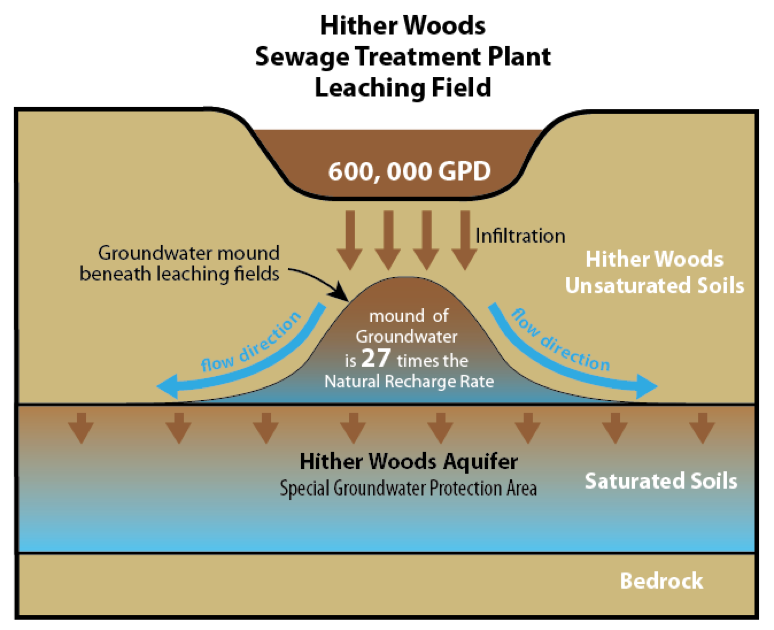
FAQ’s
What about the massive amount of wastewater which is 27 times greater than the natural recharge rate on Long Island?
Percolation, or "the pace at which water drains through the earth" and "the direction that water will go," is a consideration in situating any Sewage Treatment Plant, particularly one built over an aquifer.
The proposed Hither Woods Sewage Treatment Plant (STP) location has not addressed the underlying soil's capacity or incapacity to absorb the massive volume of anticipated effluent from the sewage treatment plant. The Table above illustrates that, once full capacity is reached, the rate of waste-water recharge to the aquifer from the Hither Woods STP may be 27 times higher than the normal recharge rate for Long Island from natural precipitation (rainwater, snowmelt). As previously shown in Exhibit 2, effluent from the STP will contain pollutants and containments that will not be removed by the treatment system. Moreover, "Forever Chemicals" and Heavy Metals have been linked to an increase in cancer rates.
According to a Supervisory Hydrologist, U.S. Geological Survey - New York Water Science Center, the water drainage from the leaching fields will cause Mounding. The massive outflow from the proposed STP (27 times larger than normal) will result in a localized column or mounding up of water in the subsoil. The water in this Mound must flow somewhere. This Mounding will create its own "groundwater divide" in the underlying aquifer, causing groundwater to flow in unpredictable directions until it reaches the sea or the bay.
The Mounding flow direction cannot be determined without a highly detailed analysis using multiple boreholes throughout the Hither Woods area.



© 2023 Whalenworks LLC
Design by Whalenworks, all rights reserved
© 2023 R.E. Whalen, photos used by permission
All photos ©copyright R.E. Whalen, used by permission